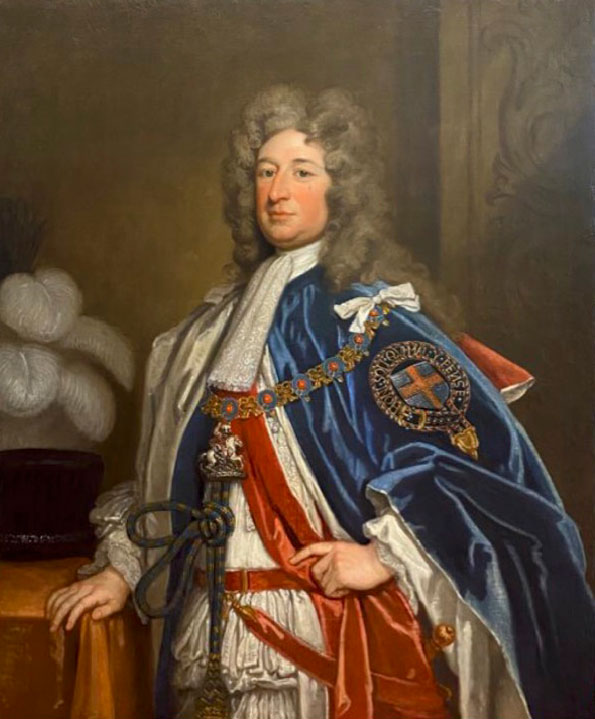SIR GODFREY KNELLER BT. and studio.
Lubeck 1646 - London 1723Charles Seymour, 6th. Duke of Somerset
Oil on canvas: 127 x 102 cm. 50 x 40 1/4 in.
Provenance: Provenance: Private Collection,
Milan North Italian Art Market
David Taylor, Curator of Paintings at the National Trust and co-curator of the British Baroque exhibition at Tate Britain, has kindly confirmed from a photograph that he considers this portrait the work of Sir Godfrey Kneller and his studio.
Sir Godfrey Kneller is well known as the pre-eminent portraitist of the late Stuart and early Hanoverian period, and our visual knowledge of the main players in this epoch comes mainly through his painted images. It is a career well documented, from his origins in the Hanseatic port of Lubeck, through a possible period in Rembrandt’s studio, to social acceptance at the heart of court life with the awarding of a baronetcy. Succeeding the enormously successful and hugely prolific Sir Peter Lely, Kneller served every sovereign from Charles II to George I as Principal Painter. As well as the aristocracy, the artist brought to life some of the leading scientific and creative geniuses of his day, including Isaac Newton, John Locke and Sir John Vanburgh.
None of his aristocratic sitters was more noble than ‘The Proud Duke’, Charles Seymour, 6th.Duke of Somerset, whose first marriage to Elizabeth Percy, daughter of the earl of Northumberland, brought vast estates and properties to the marriage, in- cluding the ancient Percy seat of Petworth in Sussex. The Duke’s outstanding monument is the rebuilding of the old house in the French manner, possibly under the auspices of a French architect who achieved a notably Gallic appearance with a cen- tral dome and an elaborate skyline of statues and urns. The palatial house was substantially simplified after a fire in 1713. Somerset’s royal appointments included Lord of the Bedchamber under Charles II and Master of the Horse under Queen Anne and George I.
Portraits of this distinguished sitter include a full-length by John Closterman at Petworth and a half-length Kit Kat image in the National Portrait Gallery, previously attributed to Kneller, but rejected by Douglas Stewart in his 1983 catalogue of the painter’s works. Our recently discovered portrait shows the sitter at a mature age and was probably painted a few years before Kneller’s death in 1723. Firstly it demonstrates a livelier and colourful execution of the face which is noticeable after the artist’s study of Rubens during a visit to Antwerp in 1693. Secondly the prototype for the Garter robes appears to be a portrait of Charles Townshend, 2nd.Viscount Townshend, executed between 1715 and 1720, as well as a portrait of Lionel Viscount Sackville, first duke of Dorset. The costume and accessories are possibly by Kneller’s studio assistant and drapery painter Edward Byng (1676-1753), as there ex- ists a drawing by him of this composition in the British Museum (E.Croft Murray & P.Hulton, British Museum, Catalogue of British Drawings: XVI and XVII centuries, 1960, p.210).

